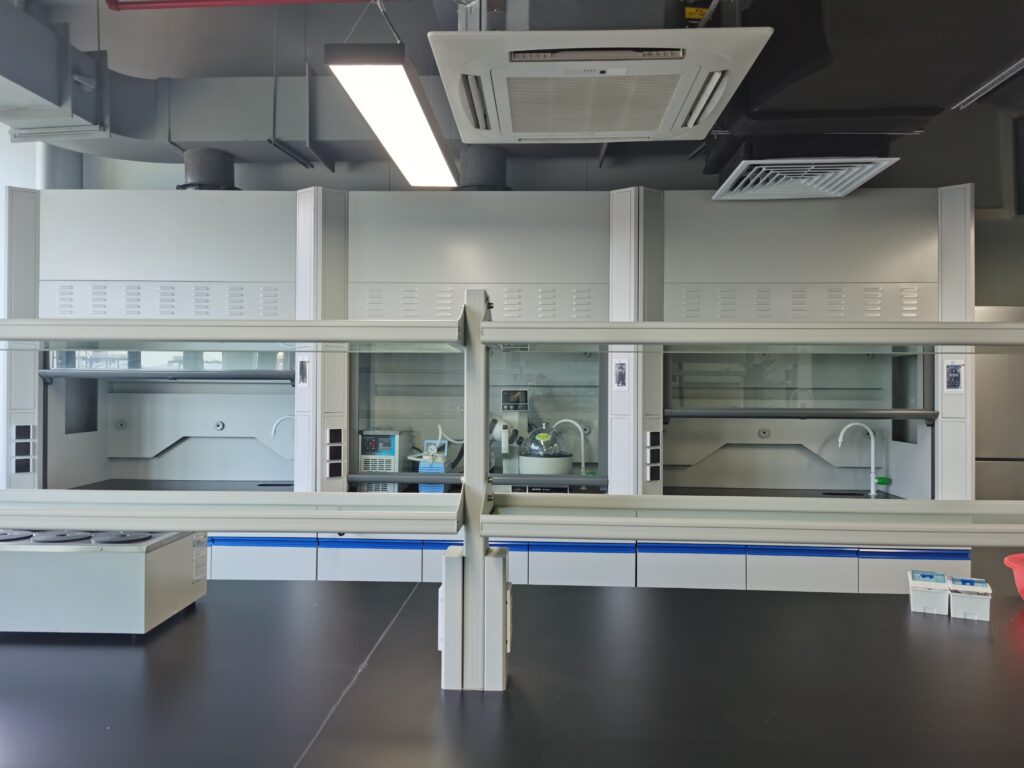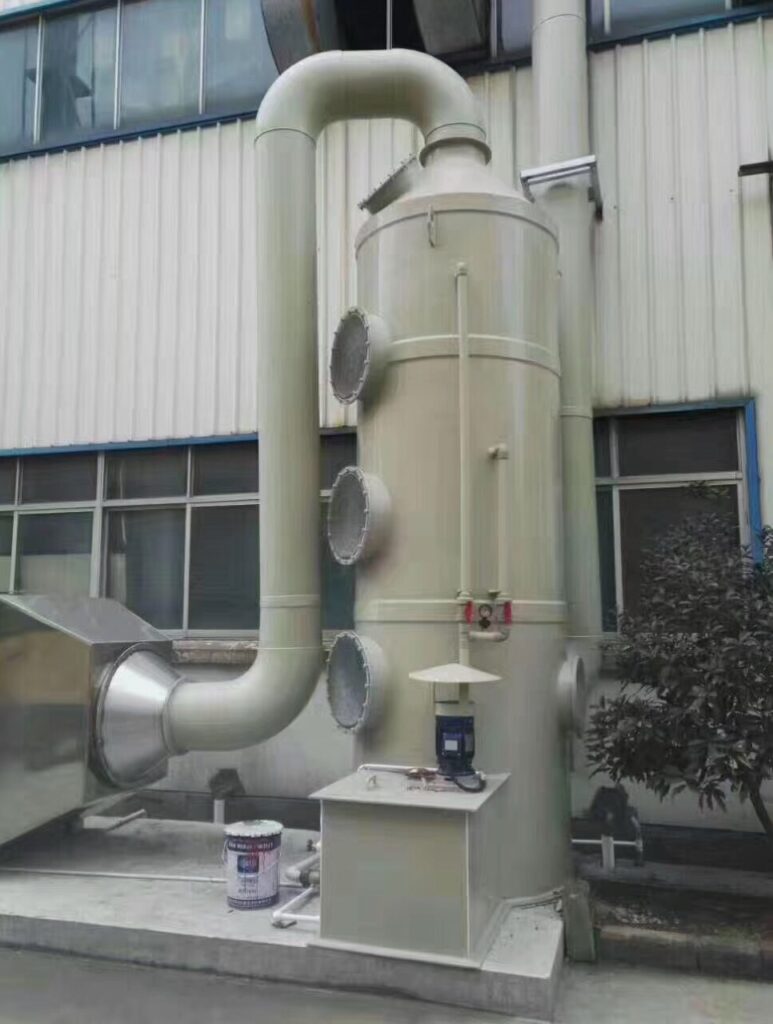The exhaust gas generated in the laboratory is very harmful, so how to deal with the exhaust gas in the laboratory and what equipment needs to be installed, Xicheng Ep Ltd technicians will give professional answers. From the source of laboratory exhaust gas generation, the type of laboratory exhaust gas, the collection method, the layout of exhaust pipes, the installation position of the exhaust gas absorption device, and the selection of PP fans, a comprehensive solution is provided.
There are many locations where the exhaust gas is generated in the laboratory. The exhaust gas generated in different locations has different collection methods and different surface wind speeds, which affects the design of the total air volume and is directly related to the selection of the rear exhaust gas absorption tower. The locations where laboratory exhaust gas is generated are as follows:


Different types of laboratories produce different types of waste gas. The laboratories mainly include school laboratories, enterprise laboratories, and government laboratories. There are many types. Each laboratory has different functions and uses, and the drugs involved are different. Different, but in general, there are two main types of exhaust gases.
How to deal with the exhaust gas in the laboratory. The most important thing in the front end is the collection of exhaust gas. A good exhaust gas collection method can reduce the air volume and resistance, and play an important role in the selection of the back-end treatment equipment, which fundamentally reduces the cost of investment. So what are the methods of exhaust gas collection in how to deal with laboratory exhaust gas?
Fume hood, the standard fume hood has 1500 type, 1800 type, the top is usually installed with an exhaust port, this fume hood is based on the surface wind speed of 0.3–0.5m/s, and the designed air volume is 1500–2200CMH.
Atomic suction hood, usually choose PP suction hood, usually designed for 500CMH
Universal extraction hood, universal extraction hood, mounted on top, with universal extraction arm, pipe diameter 100mm, usually designed as 300CMH
Environmental air vents, in addition to the above-mentioned targeted air venting, need to be designed with multiple environmental air vents to connect to the exhaust gas absorption tower.
In the design of laboratory exhaust gas treatment, it is not only necessary to consider the selection of the exhaust gas purification device, but also the layout and selection of the pipeline. The laboratory air duct usually uses laboratory fume hood, polypropylene material, corrosion resistance, according to the processing system, acid The alkali exhaust system and the organic exhaust system are separated, and the branch pipe is merged into the main pipe for design.
Fume Hood — ø250 duct
Atomic hood — ø110 duct
Universal hood — ø110 duct
Ring exhaust louver vent — ø160 duct
If the laboratory exhaust gas is acid-base exhaust gas such as hydrochloric acid, nitric acid, hydrofluoric acid, etc., choose a spray wet scrubber. The wet scrubber adopts the principle of counter-flow absorption. Through the above-mentioned PP air pipe, it is introduced into the tail gas absorption tower, and a circulating liquid spray device is installed in the tower absorber. After the tail gas passes through the spray packing, an acid-base neutralization reaction occurs, and the tail gas is purified.
The other is organic waste gas, which adopts the principle of activated carbon adsorption, and also needs to be installed with a PP-induced draft fan.
How to deal with the exhaust gas in the laboratory? In this system, there is an induced draft fan, which is the key to the operation of the entire system. The power source of the system’s exhaust air operation depends on the fan, and the PP fan with different power and speed is configured according to the different air volumes.
The installation of the PP fan adopts the principle of rear placement, that is, it is installed at the rear end of the exhaust gas absorption device. The front-end pipeline and the exhaust gas absorption device are in a negative pressure operation state, which ensures that the gas entering the fan is purified gas. This design can reduce the number of fans. operating pressure and prolong the service life of the fan.


All the above conditions are met, and there is an installation problem. Where is the laboratory exhaust gas absorption tower installed? It is recommended to install the exhaust gas absorption device on the roof. After the PP air duct branch pipe is merged into the main pipe, the exhaust gas is led to the roof of the building and enters the absorption tower. After being discharged by the fan, the exhaust gas absorption tower is installed using the excess space on the roof, which saves space and reduces the It can reduce noise pollution, and at the same time, it is conducive to the emission of exhaust gas, and can meet the design height requirement of 15 meters for environmental protection chimneys.